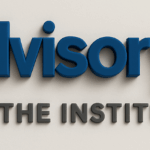Prefer to listen rather than read? An audio recording of this article is available HERE.
The modern automobile is an incredible piece of engineering, combining comfort, safety, efficiency, and performance. You can go as fast or as slow as you’d like (within the limits of the law, of course!), yet have the capability to adjust for changing conditions. As the driver, you have a level of control; however, many automobiles today feature technologies that act to keep you safe and the vehicle in a reliable state of operation, such as collision detection, automatic braking, anti-lock brakes, airbags, vehicle diagnostics, and emergency communication services.
When you think about the relationship between business and IT, doesn’t the business want and need the same things? The business needs to be able to work at the speed of business, with the ability to control direction and adjust to changing conditions. At the same time, business must be able to rely on the IT organization to keep the business safe and provide reliability in its services.
The concept of ‘bi-modal IT’ attempted to address this balance.
But bi-modal IT, unfortunately, got it wrong. While IT capabilities do need to evolve to meet future demand for agility, the bi-modal model doesn’t quite move these capabilities to what a business truly wants and needs.
In 2014, Gartner introduced the bi-modal operating model for IT organizations to address the growing business demand for speed and agility from IT. This model describes two modes of operation within IT:
- “Mode 1” or ‘traditional’ IT, is sequential, emphasizing safety and accuracy
- “Mode 2” is exploratory and nonlinear, emphasizing agility and speed1
What’s wrong with bi-modal IT? Front-end, customer-facing systems – the presumptive domain of the Mode 2 organization – are not of much value without the clear, well-defined interfaces with those back-end, transactional systems found in the Mode 1 organization. Simply put, a business will not be happy in the long term if speed and agility are delivered at the expense of reliability and stability.
Bi-modal IT doesn’t fix that issue; in fact, it is nothing more than a “Band-Aid” for obscuring a multitude of issues.
It’s just a bit too “cut and dry”
The bi-modal IT model implies that the Mode 1 organization is not able to scale or is not aligned with the business. Furthermore, it does not describe how the Mode 2 organization interfaces with the Mode 1 organization. To be successful, IT has to work and deliver as a complete organization.
Furthermore, bi-modal IT doesn’t address the technical debt that organizations have incurred while building the systems and services on which the business currently relies. Simply segregating IT into two modes doesn’t address the issue. Businesses have made significant investments in building their traditional IT (Mode 1) infrastructures, which cannot simply be written off or tossed aside.
Creates or propagates a cultural chasm
One of the criticisms of the bi-modal approach is the cultural gap it will create between the Mode 1 and Mode 2 organizations. Bernard Golden writes in his January 2015 CIO magazine article, “As this bi-modal reality sets in, one can expect many companies to experience huge conflict as the two camps engage in pitched battles for influence, resources, and power. The topic may be technology, but the participants are human, and the result is going to be like any other domain where people fight over limited resources.” 2
Bi-modal IT will only exasperate any underlying cultural issues between the Mode 1 and Mode 2 organizations. The correct approach is to instill a culture that results in convergence – the realization that IT is one team and the IT team is part of a bigger team known as “the business”. This is not just an IT issue to solve, but a business challenge to which IT can and should make a significant contribution.
Doesn’t really solve the problem
The bi-modal model doesn’t solve the key issue facing business and IT today – how to address the tension between agility and stability between business and IT. Setting up a bi-modal approach within IT won’t necessarily resolve the issue, and may in fact exacerbate it. 3
First, the processes and governance aren’t there. ITSM, as it has often been implemented , has not been deployed with the need for agility having equal consideration as stability and control. DevOps (which in my opinion, is a cry for a mature ITIL Release and Deployment process) is a step forward in that it addresses the agility aspect, but does not quite reach the need for stability and reliability.
If Mode 2 represents a DevOps environment, the tools aren’t there either. There are three basic layers in DevOps – infrastructure, tooling, and management. The infrastructure layer is comprised of the technology that provides virtualization functionality to make compute, network, and storage easily accessible. The tooling layer is made up on technologies that make access and configuration of the infrastructure layer easier. The management layer is at the top and has the goal of abstracting away both the tooling and infrastructure layers into a common workflow for turning application code into a running application.
While there are some emerging technologies in each of the three layers, at this time, no tool addresses all three layers.4
Lastly, bi-modal IT doesn’t address the issue of governance. If your organization feels that IT must become “modal”, then a “multi-modal” approach is what is needed. In a multi-modal approach there is an agreed balance between velocity – which is not just about speed, but speed with direction – and agility, stability and efficiency. Clear governance must be established.
Bi-modal IT implications on digital transformation
What many organizations are finding is that for a digital transformation to be successful, the transformation must be end-to-end, with customers at one end and the transactional or systems of record on the other end. These transactional or systems of record are the responsibility of the Mode 1 organization.5
The bi-modal IT model fails to address this foundational element of digital transformation: having well-defined, streamlined, and transparent end-to-end processes between the customer and the business. Golden provided an example in his CIO article when he wrote, “For [Mode] 2 applications to really deliver value, they need to interact with transactional system; after all, I don’t just want to have a mobile application that lets me interact with a loan officer, I want to use it to submit my documents, track my loan progress, and even sign-off on the loan. This means the [Mode] 2 application I’m using has to integrate with a back office [Mode] 1 application.”
Collaboration, inclusion, and convergence
Rather than become “modal-minded”, shift the thinking to becoming “outcome-focused”. Start by building a foundation based on a culture of collaboration, inclusion and convergence. Define and establish a governance structure that enables both the business and IT to be successful and meet the requirements demanded by the digital economy. Remember, the outcome you want is a satisfied customer that has trust and confidence in your business – and an integrated business and IT team that is hitting on all cylinders that earns that satisfied customer.
Sources:
1 “What Is Bimodal IT? See Gartner’s IT Glossary For The Answer.” Gartner IT Glossary. Gartner Research, 20 Jan. 2015. Web. 11 May 2016. http://www.gartner.com/it-glossary/bimodal
2 Golden, Bernard. “What Gartner’s Bimodal IT Model Means to Enterprise CIOs.” CIO. CIO Magazine, 27 Jan. 2015. Web. 11 May 2016. http://www.cio.com/article/2875803/cio-role/what-gartner-s-bimodal-it-model-means-to-enterprise-cios.html?nsdr=true&page=2
3 Golden, Bernard. “What Gartner’s Bimodal IT Model Means to Enterprise CIOs.” CIO. CIO Magazine, 27 Jan. 2015. Web. 11 May 2016. http://www.cio.com/article/2875803/cio-role/what-gartner-s-bimodal-it-model-means-to-enterprise-cios.html?nsdr=true&page=2
4 Fishner, Kevin. “DevOps Landscape 2015: The Race to the Management Layer – The New Stack.” The New Stack. The New Stack, 04 June 2015. Web. 11 May 2016. http://thenewstack.io/devops-landscape-2015-the-race-to-the-management-layer/
5 Bloomberg, Jason. “Bimodal IT: Gartner’s Recipe For Disaster.” Forbes. Forbes Magazine, 25 Sept. 2015. Web. 11 May 2016. http://www.forbes.com/sites/jasonbloomberg/2015/09/26/bimodal-it-gartners-recipe-for-disaster/2/#66d2eddb5752
About the Author:






I think we may be having a ‘chicken vs. egg’ argument here. I agree with the thought that trying to integrate mode 2 solutions with mode 1 solution infrastructure is problematic and not likely to provide the robustness that digital businesses require. As I’ve said before, agility must be architected into a company’s processes and systems, it cannot be bolted on after the fact. Unfortunately, there’s not a short-cut answer to be had when you arrive at a point of need and find that your mode 1 systems are not going to work to meet mode 2 needs. It is necessary to build and work to a short-, medium- and longer-term plan to keep the base services in line with expected service requirements. Bi-modal IT is probably at odds with this.
Thanks for your comments Howard. I fully agree with you; like you, my concern is that bimodal IT is being viewed as a short-cut answer to the larger issue of how do companies transform their legacy, or mode 1, environments as quickly as the digital economy may be demanding. While digital transformation of these systems will not happen overnight, bimodal IT is not the answer either. A well-thought plan and an agreed governance construct (which is what differentiates companies that are successfully transforming from the ones that are just reacting) is the way forward.
Doug – could not agree more – and I have ruffled feathers saying exactly the same. Bi-modal is something we in IT invent to create steps, we understand, to where the business and end customer already is. Frankly I see it as ‘now’ and ‘now-now’. We need to listen and fully appreciate what our customers expect and demand. Right pace. Not speed of response – not always – pace. Our cadence for work is sympathetic to that of the business and vice versa.
Thanks for reading the post and for your comments Ian. Your comment “our cadence for work is sympathetic to that of the business and vice versa” is exactly on-target–the business and IT must establish and work in cadence with one another. Neither can be successful if not working in concert with the other, and must define and establish the right pace for the right demand.